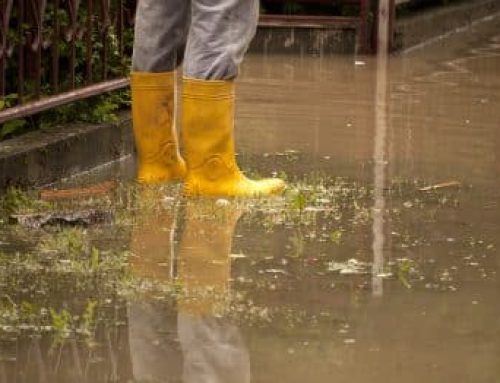Coverage related to damage to, and caused by, trees and other greenery on the property can vary widely depending upon the specific circumstances of an incident. Some policies may include limited coverage of trees and greenery while others exclude it. In the same way, coverage may or may not be available for damage to property or injuries caused by a falling tree depending upon what caused the tree to fall and if the fallen tree was healthy or dead at the time it fell. Common losses might include landscaping damaged in a windstorm or trees falling on a variety of nearby objects including your property, the neighboring property, other items in the yard such as play equipment or a pool, cars parked in the street, or even, sadly, pedestrians who are in the wrong place at the wrong time.
Welcome to our “Is It Covered?” series. For a fuller introduction of the series, read HERE. We hope these quick reads will help you increase your understanding of your insurance coverage, clear up confusion and help you avoid preventable losses! Please bear in mind that insurance policies may vary, so always check your own policy for language specific to your covered property. If you have coverage questions, don’t hesitate to call your agent who will be happy to assist you!
What Types of Damage Could Be Excluded?
There are two main types of damage that could be excluded: Property Damage and Bodily Injury.
Some examples of Property Damage could be:
- One of your trees falls on outdoor furniture you own or other shrubs or plants on the premises.
- Tree roots damage your in-ground pool.
- Trees, shrubs, or plants are damaged in a storm.
Though some policies may offer limited coverage for damage to trees, shrubs, and plants, some may exclude coverage altogether through an endorsement in the policy. If coverage is included, an insurer may not offer to pay more than $250 per plant damaged and may limit the total reimbursement for damaged plants to $1000. Some policies also restrict the Causes of Loss to 5 perils: Fire, Lightning, Explosion, Riot or Civil Commotion, and Aircraft.
If the trees or other greenery on your property are damaged in a Named Windstorm, and your property is in a coastal area, you will likely need Named Windstorm coverage for those items to have the potential of being covered. Named Windstorm is coverage specific to damage that happens during a Hurricane or Tropical Storm and is typically purchased separately. It is NOT the same as Wind and Hail coverage that covers items damaged in tornadoes or thunderstorm events.
Liability Coverage
Liability insurance coverage protects the insured financially if they are held responsible for someone else’s property damage or injury.
Property Damage
Property Damage as it relates to Liability coverage is the type of damage you may be held responsible for if your property injures another person or causes damage to another person’s property. Your liability usually depends on the specific circumstances of the event.
Some examples of Property Damage on the Liability side could be:
- One of your trees falls on your tenant’s property – such as a jungle gym in the backyard or their car.
- One of your trees falls on your neighbor’s house, fence, or car.
Bodily Injury
Bodily Injury under the Liability category is “any type of injury, sickness or disease sustained by a person, including death,” resulting from the “Outdoor Property.” More common than you would think, we have seen pedestrians injured and even killed by falling trees or tree limbs.
Could I Be Held Responsible for an Injury or Damage to Another’s Property Caused By One of My Trees Falling?
The short answer is – it depends. If a tree falls as a result of an “act of God,” you will typically not be held responsible for the damage that occurs. One example of an “act of God” might be a healthy tree falling as a result of overly wet soil combined with intense winds or other similar circumstances created by stormy weather. The key to the definition of an “act of God” is that it is an “injury due directly and exclusively to natural causes which could not have been prevented by the exercise of reasonable care and foresight.”
If however, you are given notice that a tree is a hazard and don’t take steps to eliminate that hazard, you may be found responsible (negligent) for the damage that the falling tree causes. Furthermore, even if you aren’t found to be negligent, you still may end up with legal fees from having to prove your innocence. Insurance policies can include clauses that remove their responsibility to defend you, for example: “Where there is no coverage under this policy, there is no duty to defend.”
What Happens if One of My Trees Falls on My Neighbor’s House?
If one of your trees falls on your neighbor’s house (or fence, car, etc.) as a result of an “act of God”, your neighbor would need to contact their insurance company to seek reimbursement for any repairs they may need to make. As you were not responsible for the tree falling, your policy will not be the one to reimburse your neighbor. If, however, it is determined that you neglected to cut down the hazardous tree that damages your neighbor’s property, your Liability policy may step in to provide coverage for the damage caused as a result of your neglect.
What does the technical lingo for this exclusion look like in my policy?
Sample policy language may look similar to this:
When Limited Coverage is Available for Damage to Trees, Shrubs, or Plants
“Outdoor Property
The most we will pay for loss or damage under this Extension is $1,000, but not more than $250 for any one tree, shrub or plant. These limits apply to any one occurrence, regardless of the types or number of items lost or damaged in that occurrence.”
If Coverage is Excluded for Damage to Trees, Shrubs, or Plants
“Property Not Covered
Covered Property does not include:
- Land (including land on which the property is located) or water;
- The following property when outside of buildings:
(1) Lawns, trees, shrubs or plants (other than lawns, trees, shrubs or plants which are a part of a vegetated roof);”
If Coverage is Excluded for Damage a Tree or other Greenery does to Property on the Premises
“This insurance does not apply to…”Property damage” to:
(1) Property you own, rent, or occupy, including any costs or expenses incurred by you, or any other person, organization or entity, for repair, replacement, enhancement, restoration or maintenance of such property for any reason, including prevention of injury to a person or damage to another property;
(3) Property loaned to you
(4) Personal property in the care, custody or control of the insured;
As insurance policies may vary, please check your own policy for language specific to your covered property.
How Much Can This Type of Damage Cost Me?
While the cost of a jungle gym or trampoline can range from a couple of hundred dollars to a couple thousand, a dead tree could do tens of thousands of dollars of damage to you or your neighbor’s property. The greater expense is if someone is injured. A falling tree could cause broken bones, paralysis, or even, death. These types of injuries could produce expenses that last years into the future.
What Can I Do to Protect Myself?
First, know what is in your policy: Read the sections of your insurance policy that address trees, shrubs, and landscaping. It is important to know both what you are and are not covered for. If you don’t understand something or have questions, don’t hesitate to contact your agent who should be happy to help you!
Inspect your trees on an annual basis. Shrubs and plants may need more regular maintenance: Keeping your greenery ship-shape should be one of your top priorities for your exterior maintenance list. Grass, vines, and shrubs can quickly get out of control if they are not “tamed” regularly. Keeping up with your trees can prevent costly damage and maintaining a tidy yard, especially on vacant properties, can help reduce the potential for your property to be vandalized. In addition to regular maintenance, be sure to check your trees after any large storms. Broken limbs may need to be trimmed immediately to avoid a loss.
Hire a licensed and insured arborist to correct any large tree issues: Be sure any arborist you hire has been certified by an organization such as the International Society of Arboriculture or the Tree Care Industry Association. They will also need to have the appropriate liability insurance. To find an arborist in your area, call TCIA at 800-733-2622 or run a Zip Code Search on www.treecaretips.org. ISA-certified arborists can be found through a search tool at www.isa-arbor.com.
Make sure your tenant understands their responsibilities when it comes to the lawn: Though any tree-trimming responsibilities will likely fall to you as the owner of the property, it is important that your tenants know what they are responsible for when it comes to the outside of the property. Be sure to specify in your lease what they are also not allowed to do at the property! At the bare minimum, they should contact you if they see any hazardous conditions. Make sure they have an easy way to contact you or the property manager if a tree is damaged or damages the property during a storm.






